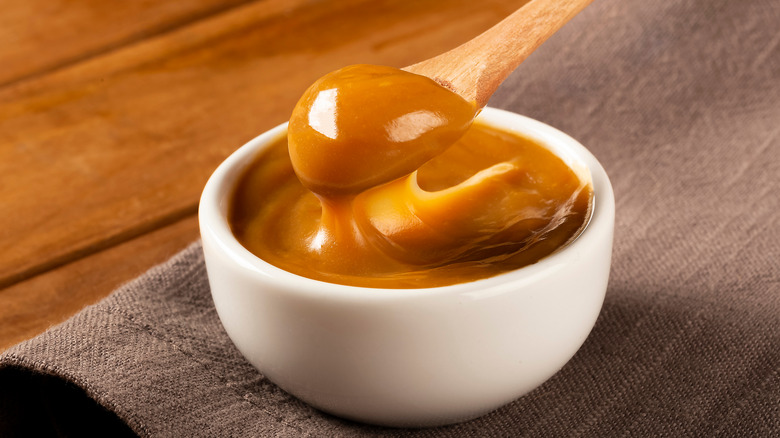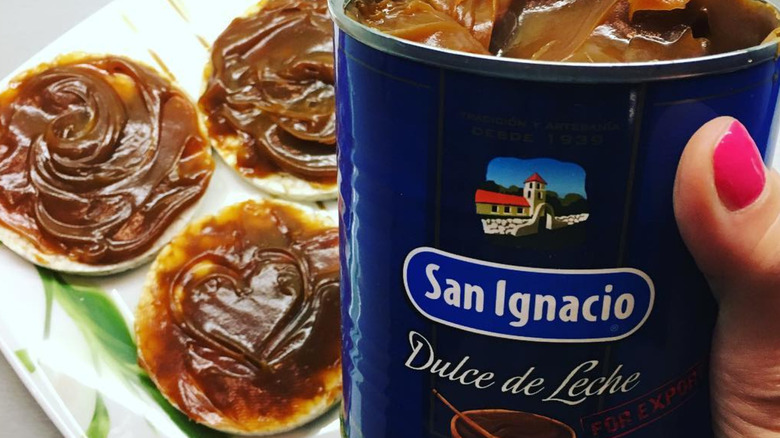The Obscure Reason Dulce De Leche Was Banned In Australia
Dulce de leche may have its roots in the Americas but it's become beloved worldwide. The thick, caramelized mixture of milk and sugar adds sumptuous flavor to dishes like ice cream and cakes and is found on tables as a condiment for crêpes, bread, or coffee. Argentina, where the spread might have originated, considers dulce de leche a national treasure and has even tried to claim it as a patrimony. But sometimes one nation's treasure is another's banned product.
Several years ago in Australia, dulce de leche lovers were left in a quandary when the government prohibited the import of Argentinian brands of canned dulce de leche. Unfortunately, there was a good reason to be cautious: Argentina was struggling with a massive outbreak of foot and mouth disease in its meat and dairy cattle. The disease poses little to no threat to humans but is highly contagious in animals like cows, pigs, and sheep. It causes sickness and reduced milk output, creating a need for costly herd vaccinations.
Because the disease can be spread through the meat and milk of infected animals, Australia banned imports of these products from Argentina to protect their own livestock — and this ban included canned milk products like dulce de leche.
Finding a replacement for authentic dulce de leche was no small feat
Without Argentinian brands of dulce de leche on store shelves in Australia, fans of the sweet spread were left looking for alternatives: other brands or even homemade sauces. For one business this turned into a years-long quest and an overseas journey.
Australian gelato company Messina is known for ingredients that don't include artificial flavors or commercial extracts. One of its best-loved flavors is – you guessed it – Dulce de Leche. The brand used to make it with only authentic, Argentinian dulce de leche ... and when the import ban went into effect, Messina was stuck. It didn't want to settle for look-alike concoctions like ordinary caramel or rely on the popular hack of boiling cans of sweetened condensed milk.
Messina took the extraordinary step of flying its team to Argentina to learn the art of real dulce de leche right at the source. It also brought home special equipment: a mechanized paila, which is a large pot used to cook down milk and sugar gently to create the spread. Now the company makes its own dulce de leche on-site for gelato and to sell in jars, so that Australians won't be without the sweet, gooey stuff again.

